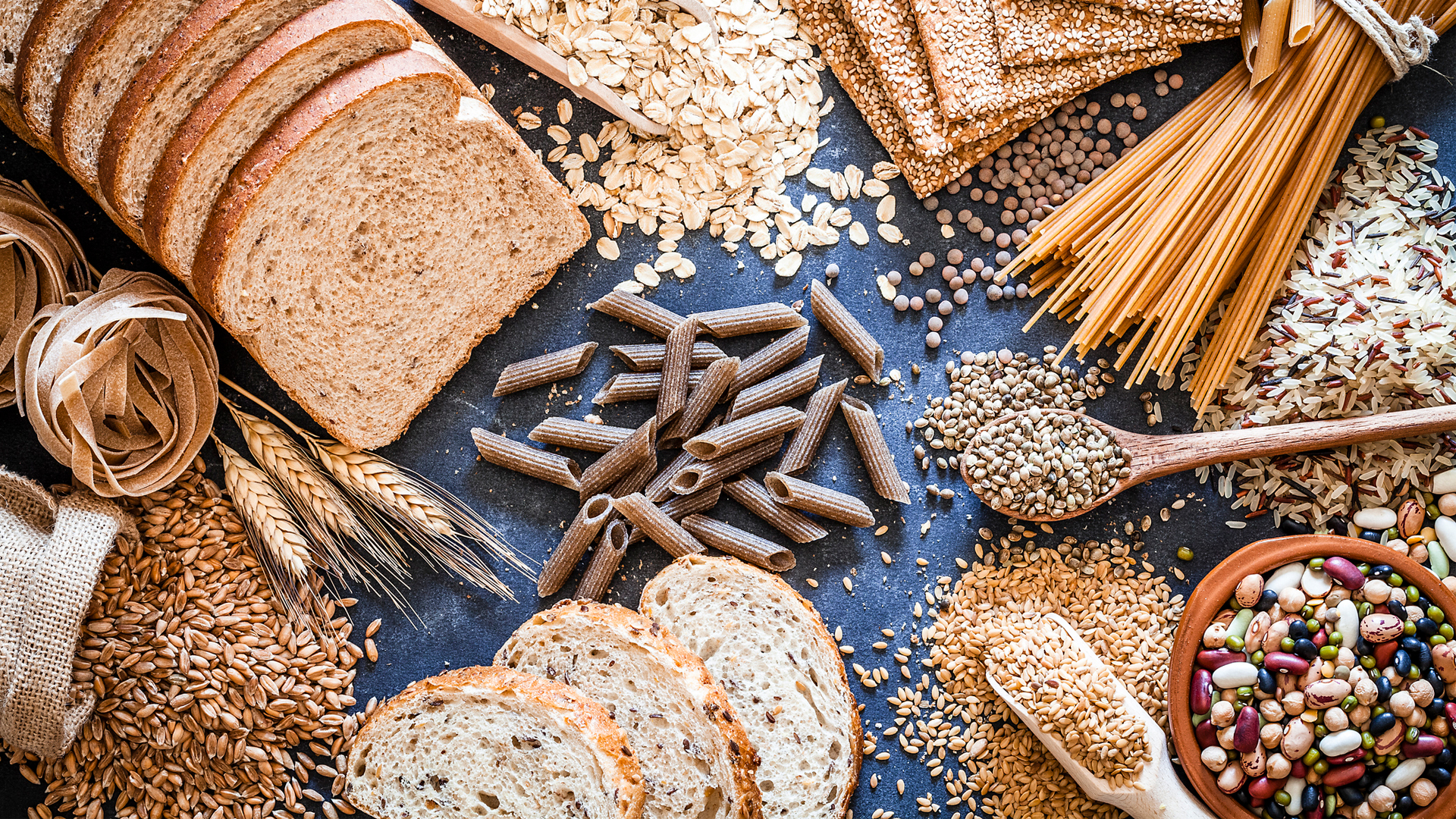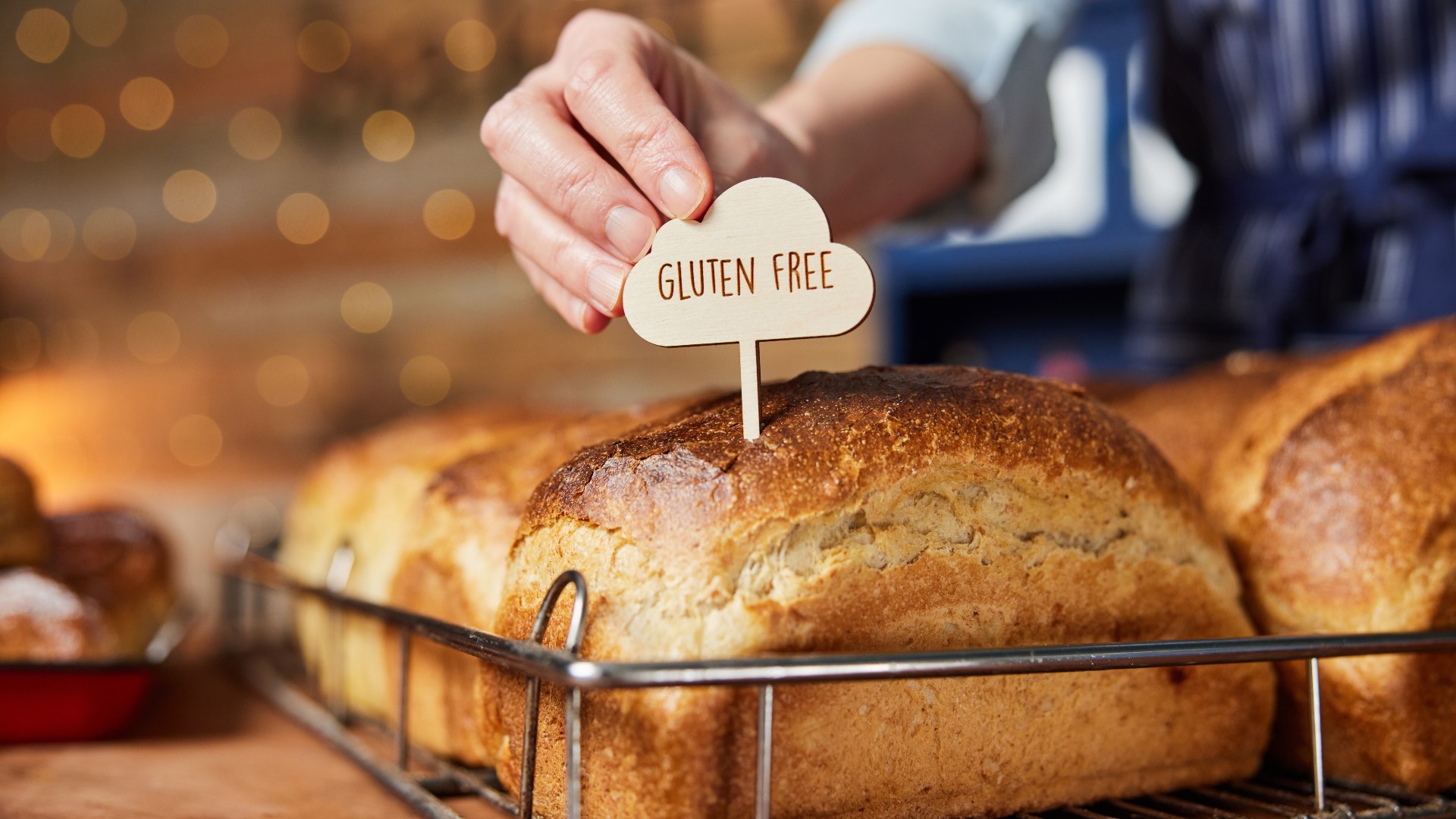What is gluten?
Gluten refers to the proteins found in wheat endosperm. Some people are gluten-intolerant, but a gluten-free diet is not for everyone.

Gluten is the group of proteins responsible for the delicious doughiness of bread, pasta, cake, biscuits and a slew of other baked goods. According to the U.S. Food and Drug Administration (FDA), gluten occurs naturally in cereal grains, such as wheat, barley and rye.
Gluten is a mixture of hundreds of distinct proteins within the same family, but it is primarily made up of two classes of proteins: gliadin, which gives bread the ability to rise during baking, and glutenin, which is responsible for dough's elasticity.
In the plant, gluten is found in the endosperm (a type of tissue produced in seeds that are ground to make flour) and nourishes plant embryos during germination. Later on, gluten in the flour affects the elasticity of dough, acting as a glue to hold the food together, which, in turn, affects the chewiness of baked products.
But gluten is not just found in grains. Because it acts as an efficient binding agent, gluten is often added to foods during processing to extend their shelf lives, improve texture and flavor, and increase moisture retention, according to a 2017 review article in the Journal of Gastroenterology and Hepatology. That's why gluten is listed as an ingredient in a range of products, like processed meats, and is used as a thickener in candies. (See below for a list of foods that contain gluten.)
Related: Eight grains that are gluten free
Is gluten bad?
Gluten isn't bad for most people, but it can be a problem for people who are gluten sensitive or gluten intolerant, meaning they can't safely and effectively break down gluten during digestion. About 18 million Americans have gluten sensitivity, according to Beyond Celiac, a nonprofit dedicated to celiac disease awareness.
The best-known form of gluten intolerance is celiac disease, which affects between 0.5% and 1% of people around the world, according to the Up to Date, an evidence-based clinical resource. When someone with celiac disease consumes gluten, it triggers an immune response, including inflammation, that causes damage to their intestines, thus preventing them from absorbing vital nutrients.

Irritable bowel syndrome (IBS), a chronic gastrointestinal disorder, is another condition that is linked with gluten intolerance. IBS affects 7% to 20% of adults in the United States, according to a paper published in the journal Gastroenterology & Hepatology. A 2013 study found that IBS patients who ate gluten had higher gut permeability, meaning their intestinal mucus let too much water and nutrients be absorbed, compared to IBS patients on a gluten-free diet. Registered dietitian Lori Chong explained that gluten grains also happen to contain large quantities of starches and sugars that can be easily fermented by intestinal bacteria and are a known agitator of IBS. There’s still much debate, according to a 2019 study in Nutrients, about whether it is the gluten or the fermentable carbohydrates in these carb-rich foods that triggers IBS.
Wheat allergy is marked by skin, respiratory or gastrointestinal reactions to wheat allergens, but it is not necessarily caused by gluten, according to UCLA Health. Wheat allergy is rare, and according to the American College of Allergy, Asthma and Immunology, 65% of children with a wheat allergy outgrow it by age 12.
Recently, scientists have become aware of another potential form of intolerance called non-celiac gluten sensitivity (NCGS). After consuming gluten, people with gluten sensitivity may experience symptoms similar to those of celiac disease, such as diarrhea, fatigue and joint pain, but they don't appear to have damaged intestines. According to a 2015 study, NCGS appears to be more common in women and young to middle-age adults. The study also questions what percentage of the population actually has NCGS, as many patients appear to diagnose and treat themselves with a gluten-free diet without consulting their doctor. Because NCGS can present with IBS-like symptoms there is ongoing research looking at how the two are linked.
Does gluten-free mean grain-free?
Gluten-free doesn't necessarily mean grain-free because not all grains contain gluten. Some examples of gluten-free grains are sorghum, millet, buckwheat, amaranth, quinoa, corn, polenta and teff. All unprocessed rice — like brown rice, wild rice and long-grain rice — are also gluten-free. However, processed, quick-cook rices may have gluten added for texture. Similarly, oats are also gluten-free but can be contaminated if they are processed using equipment that has handled gluten, Chong said.
The effects of going gluten-free
In cases of gluten intolerance, doctors typically recommend a gluten-free diet. Patients must avoid eating foods and ingredients that contain gluten, including bread, beer, French fries, pasta, salad dressing, soy sauce and even some soups (unless otherwise marked as "gluten-free"). According to the FDA, food products must contain less than 20 parts per million of gluten to be labeled "gluten-free."

In recent years, many people without a diagnosed problem with gluten, such as celiac disease, have taken up gluten-free diets. In fact, according to the Mayo Clinic, 80% of people on gluten-free diets do not have a celiac disease diagnosis. Experts worry, however, that adopting these diets without explicitly needing to could be detrimental to a person's health, as gluten-free foods are often nutrient-deficient. Dr. Refaat Hegazi, head of global medical affairs for nutrition at Abbott, said going gluten-free can affect the body in many ways.
First, some people may use gluten avoidance as a way to restrict processed foods for weight loss. Food restrictions associated with a gluten-free lifestyle can help some people lose weight if they replace starches with healthier options, like quinoa, which doesn't contain gluten. "But it can also backfire — consumption of too much "healthier" gluten-free food can cause weight gain," Hegazi said. That's because food manufacturers often include additional fat or sugar to make gluten-free products tastier, thus increasing the product's calorie count and sometimes deceiving those using the diet to control their waistline.
Second, going gluten-free can cause nutrient deficiencies. Many whole grains are rich in vitamins and minerals, like vitamins B and D, iron and fiber. If you're going gluten-free, it's wise to consult your doctor or a registered dietitian. "Whether you need to be gluten-free as prescribed by a doctor, or you are choosing to cut back for personal reasons, a gluten-free diet is doable if followed carefully," Hegazi said.
Common foods that contain gluten
Here are some foods that commonly contain gluten, according to the Celiac Disease Foundation:
- Pasta: Ravioli, dumplings, couscous and gnocchi.
- Noodles: Ramen, udon, soba (those made with only a percentage of buckwheat flour) chow mein and egg noodles. (Note: Rice noodles and mung bean noodles are gluten-free.)
- Breads and pastries: Croissants, pita, naan, bagels, flatbreads, cornbread, potato bread, muffins, doughnuts, rolls.
- Crackers: Pretzels, Goldfish, graham crackers.
- Baked goods: Cakes, cookies, pie crusts, brownies.
- Cereal and granola: Corn Flakes and rice puffs, which often contain malt extract/flavoring; granola often made with regular oats (not gluten-free oats).
- Breakfast foods: Pancakes, waffles, French toast, crepes, and biscuits.
- Breading and coating mixes: Panko breadcrumbs.
- Croutons: Stuffings, dressings.
- Sauces and gravies (many use wheat flour as a thickener): Traditional soy sauce, cream sauces made with a roux.
- Flour tortillas
- Beer (unless explicitly gluten-free) and any malt beverages (see "Distilled Beverages and Vinegars" below for more information on alcoholic beverages).
- Brewer's yeast
- Anything else that uses "wheat flour" as an ingredient.
Foods that may contain gluten (double-check the label)
- Energy bars/granola bars: Some bars may contain wheat, and most use oats that are not gluten-free.
- French fries: Be careful of batter containing wheat flour or cross-contact from fryers.
- Potato chips: Some potato chip seasonings may contain malt vinegar or wheat starch.
- Processed lunch meats
- Candy and candy bars
- Soup: Pay special attention to cream-based soups, which have flour as a thickener. Many soups also contain barley.
- Salad dressings and marinades: These may contain malt vinegar, soy sauce, flour
- Starch or dextrin: If these are found on a meat or poultry product, they could be from any grain, including wheat.
- Brown rice syrup: It may be made with barley enzymes.
- Meat substitutes: These may be made with seitan (wheat gluten) such as vegetarian burgers, vegetarian sausage, imitation bacon, imitation seafood. (Note: Tofu is gluten-free, but be cautious of soy sauce marinades and cross-contact when eating out, especially when the tofu is fried.)
- Soy sauce: However, tamari made without wheat is gluten-free.
- Pre-seasoned meats
- Eggs served at restaurants: Some restaurants put pancake batter in their scrambled eggs and omelets, but on their own, eggs are naturally gluten-free.
This article is for informational purposes only, and is not meant to offer medical advice.
This article was originally written November 18, 2017 by Live Science contributor Alina Bradford with additional reporting by Rachel Ross. It has since been updated on September 13, 2022 by Donayan Coffey.
Sign up for the Live Science daily newsletter now
Get the world’s most fascinating discoveries delivered straight to your inbox.

- Donavyn CoffeyLive Science Contributor
- Rachel RossLive Science Contributor










